Related Research Articles
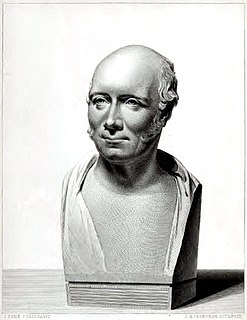
Robert Stevenson, FRSE, FGS, FRAS, FSA Scot, MWS was a Scottish civil engineer, and designer and builder of lighthouses. His works include the Bell Rock Lighthouse.
Francis Buchanan FRS FRSE FLS, later known as Francis Hamilton but often referred to as Francis Buchanan-Hamilton, was a Scottish physician who made significant contributions as a geographer, zoologist, and botanist while living in India. He did not assume the name of Hamilton until three years after his retirement from India.

John Hutton Balfour was a Scottish botanist. Balfour became a Professor of Botany, first at the University of Glasgow in 1841, moving to the University of Edinburgh and also becoming the 7th Regius Keeper of the Royal Botanic Garden Edinburgh and Her Majesty's Botanist in 1845. He held these posts until his retirement in 1879. He was nicknamed Woody Fibre.

William Roxburgh FRSE FRCPE FLS was a Scottish surgeon and botanist who worked extensively in India, describing species and working on economic botany. He is known as the founding father of Indian botany. He published numerous works on Indian botany, illustrated by careful drawings made by Indian artists and accompanied by taxonomic descriptions of many plant species. Apart from the numerous species that he named, many species were named in his honour by his collaborators.

General Robert Melvill LLD was a Scottish soldier, antiquary, botanist and inventor.

Thomas Charles Hope was a British physician, chemist and lecturer. He proved the existence of the element strontium, and gave his name to Hope's Experiment, which shows that water reaches its maximum density at 4 °C (39 °F).
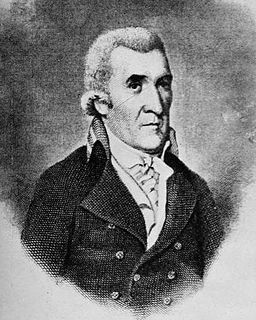
Dr William Wright (1735–1819) was a Scottish physician, botanist and slave owner. In 1783 he was a joint founder of the Royal Society of Edinburgh.

The St Vincent and the Grenadines Botanic Gardens is located in Kingstown, Saint Vincent and the Grenadines. Established in 1765, it is the oldest botanic garden in the Western Hemisphere.
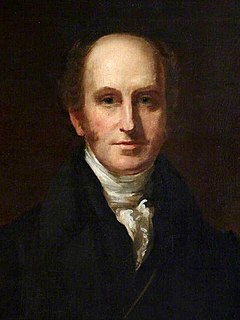
Robert Graham was a Scottish physician and botanist.

Professor John Hope was a Scottish physician and botanist. Although he did enormous work on plant classification and plant physiology, due to an absence of publications, he is now best known as an early supporter of Carl Linnaeus's system of classification.
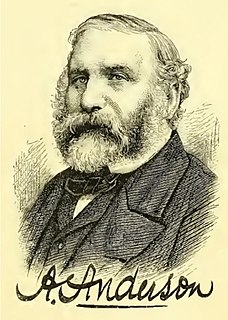
Alexander Anderson was a Scottish surgeon, explorer and botanist who worked as Superintendent to the Botanical Garden on the Windward Island of Saint Vincent from 1785 to 1811.

Anna Maria Walker and her husband Colonel George Warren Walker (1778–1843) were Scottish botanists in Ceylon who made extensive collections of plants between 1830 and 1838. Several species of ferns and orchids were named after them by Sir William Jackson Hooker with whom they corresponded. They also corresponded with and collaborated with other botanists in the region such as Robert Wight. Anna Maria was also an excellent botanical artist who illustrated many species of orchids. Plant species named after them include Vanilla walkeriae, Liparis walkeriae and Thrixspermum walkeri.
Dr William Craig FRSE FRCSE was a Scottish surgeon and botanist. He was an expert on jaborandi, an appetite suppressant. His collections and studies were largely focussed upon Perthshire in central Scotland.

Francis Brown Douglas FRSE DL was a Scottish advocate who served as the Lord Provost of Edinburgh from 1859 to 1862.
Prof George Henry Edington FRSE FRCS DL JP TD (1870-1943) was a Scottish surgeon, anatomist and medical author who served as President of both the Glasgow Medico-Chirurgical Society and the Royal Faculty of Physicians and Surgeons of Glasgow 1928 to 1940. He was Honorary Physician to King George V from 1922 to 1927.

Dr Andrew Freeland Fergus FRSE LLD (1858–1932) was a Scottish ophthalmic surgeon. He was President of the Royal College of Surgeons in Glasgow, President of the Chirurgical Society, President of the Royal Philosophical Society of Glasgow, and President of the Greenock Faculty of Medicine.
William Jameson CIE FRSE (1815-1882) was a Scottish physician and botanist linked to the massive spread of tea plantations in North India in the 19th century.
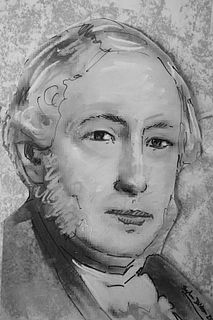
Sir William Newbigging FRSE FRCSEd FRGS was a Scottish surgeon who served as President of the Royal College of Surgeons of Edinburgh from 1814 to 1816. He was a keen amateur geographer.
William Walker was a Scottish surgeon who specialised in ophthalmic surgery. He was Surgeon Oculist in Scotland to Queen Victoria and President of the Royal College of Surgeons of Edinburgh. He was a keen amateur photographer, whose calotypes were displayed in photography exhibitions.
John Lindsay Stewart (1831–1873) was a 19th-century Scottish botanist remembered for his conservation of Indian forests.
References
- ↑ Guilding, Lansdown (1825). An account of the botanic garden in the island of St. Vincent: from its first establishment to the present time. Glasgow: Richard Griffin & Company.
- ↑ Biographical Index of Former Fellows of the Royal Society of Edinburgh 1783–2002 (PDF). The Royal Society of Edinburgh. July 2006. ISBN 0-902-198-84-X.
- ↑ Transactions off the Royal Society of Edinburgh vol.4
- ↑ "William Lochead – Botanical Gardens of St Vincent and the Grenadines". botanicalgarden.gov.vc.